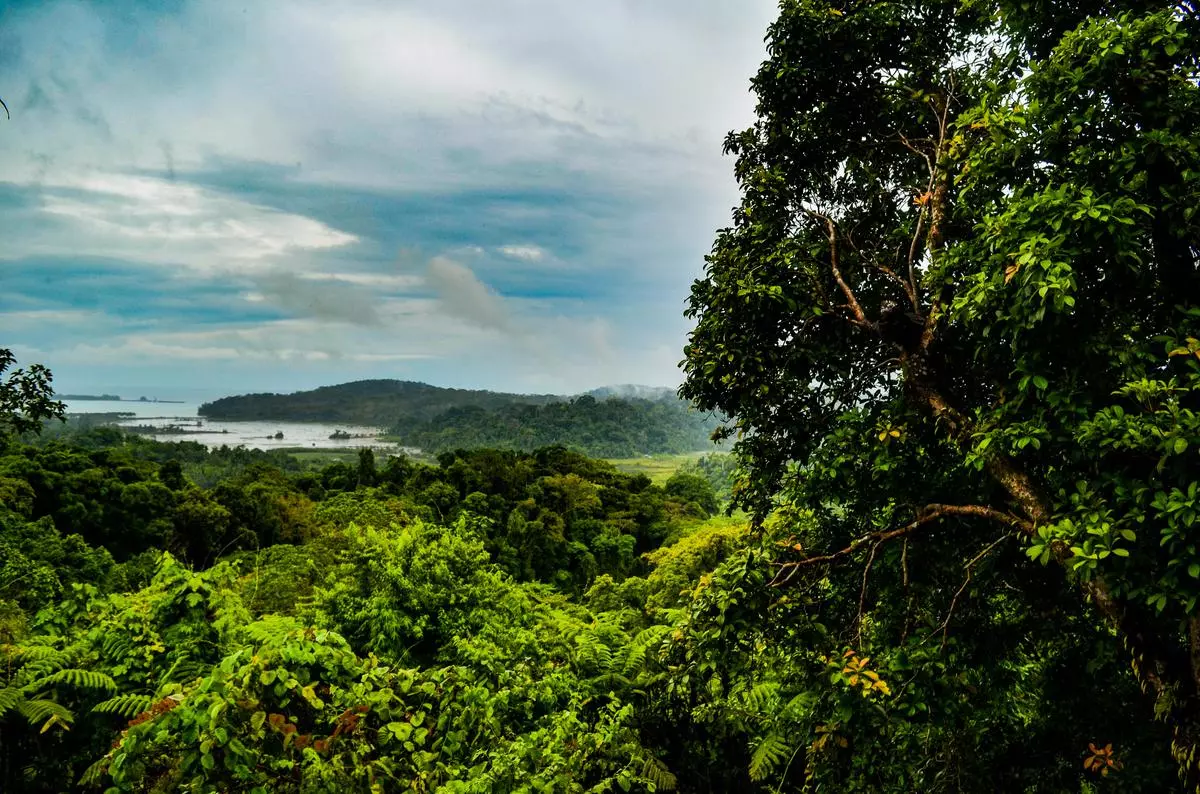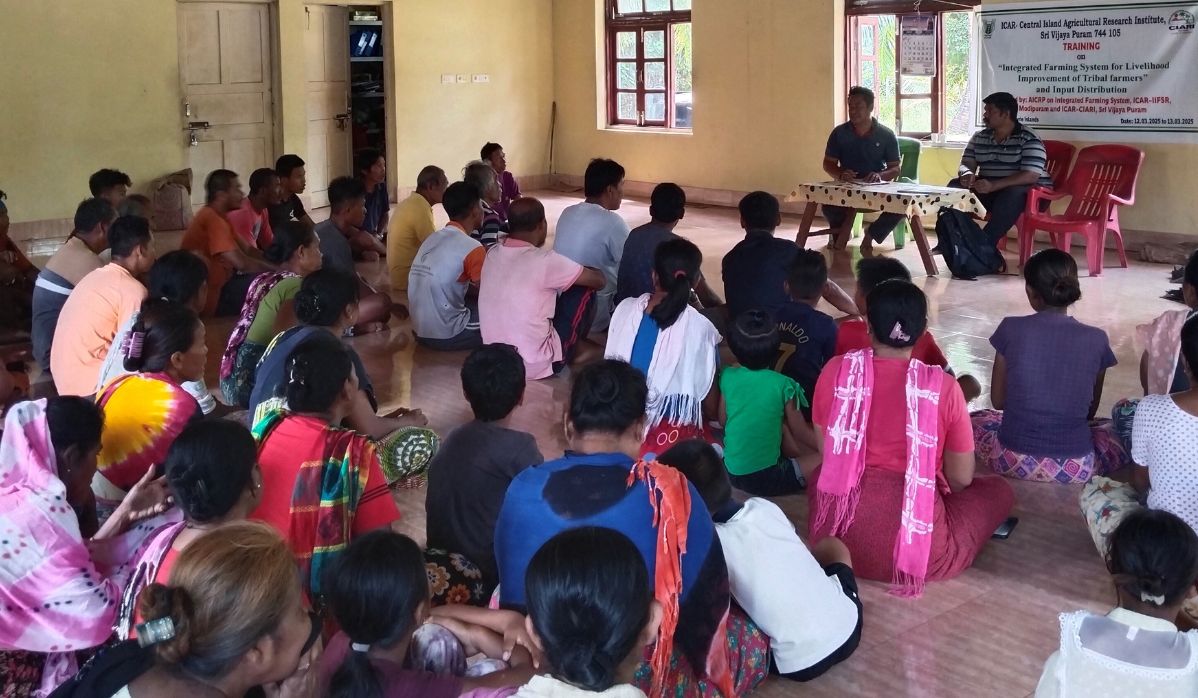Thinking from the farmer’s viewpoint, authorities officers in Kerala really feel it is going to be troublesome for them to satisfy the 6,500 ha oil palm enlargement goal set by the National Mission on Edible Oils.
The 2030 imaginative and prescient doc of the Directorate of Oil Palm Research, below the Indian Council for Agricultural Research (ICAR), goals to develop India’s oil palm cultivation to 1 million hectares. The Union Cabinet has allotted Rs.11,040 crore to satisfy this goal. By March 2021, the nation has managed to result in 3,70,028 ha below oil palm.
However, the unique crop is being promoted on Indian landscapes disregarding the tales of ecological devastation and loss in Malaysia and Indonesia. The disapproval by Indian Council of Forestry Research and Education (ICFRE) with regard to rising them on bio-diverse areas too has not stopped the crop from coming into such locales in India. Despite the Supreme Court ban towards additional enlargement of oil palm within the biodiverse area of Andaman & Nicobar, imposed in 2002, deforestation started just a few weeks in the past to convey extra space below the oil palm. Expanding oil palm cultivation in Andaman & Nicobar Islands, an ecologically fragile archipelago, is a part of the Rs 11,000 cr National Mission on Edible Oils – Oil Palm (NMEO-OP) plan.
According to the division of agriculture, whereas most states have come near assembly at the least 50% of their state’s space enlargement goal below ISOPOM, NMOOP, OPAE & NFSM, Kerala has solely managed to realize about six % of its goal between 2014 and 2019. This push for oil palm enlargement continues regardless of a gradual rise in a number of oil palm plantations throughout states being deserted by the farmers as a result of poor infrastructure and low land suitability. Whenever farming was hit by disaster farmers in Kerala have looked for different money crops. The story of oil palms isn’t any completely different.
“We tried growing vegetables, tubers, coconuts but nothing has ever survived the floods. Look around, all the coconut trees are dying. Finally we have found a crop that can sustain water logging. Nothing seems to bother them. They can stand in water for several months and yet bear fruits,” mentioned Tommy John from Kottayam, who adopted oil palm farming. Vijayan Nair, one other farmer from Ernakulam, took to grease palms as a result of his farm stage was means decrease than his surrounding farms. “So nobody easily agrees to work on my farm. The last time I sowed paddy, I had to get my friends and neighbours to help me with the harvest. But I did not want to leave my land barren,” mentioned Vijayan Nair from Ernakulam. For Ousepachan, a farmer from Kottayam district, discovering labourers for harvesting rubber was turning into very troublesome. “I had to look for an alternative crop in order to sustain myself,” he mentioned.
Oil palm turned out to be the choice crop within the 90s for a number of farmers throughout Kerala who struggled with low earnings and pest assaults. In the following twenty years that adopted it changed a number of paddy farms, rubber plantations, coconut groves and forest lands. “When I heard about oil palm, I simply jumped in. I didn’t even apply for the subsidy. I just wanted to plant something,” recalled Vijayan Nair.
A bait for future conversions
Soon after the oil palms have been planted, Vijayan Nair started to remorse his choice as rats and snakes began to proliferate and have become an enormous nuisance to the neighbouring farmers. “While my 15 oil palms were growing well, the rats were eating up my brother’s paddy that he had just sown and as soon as my palms grew bigger they would cast shadows on his land and make it even more difficult for him to grow paddy.”
“You cannot grow paddy adjacent to oil palm farms. You can only grow them a plot or two away.” mentioned Pramod kumar, an oil palm farmer from Pathanamthitta.
Not desirous to be the reason for his brother’s misfortune, Vijayan employed a JCB and uprooted all of the seven-year-old timber and ultimately burned down his farm. “Unlike other trees, the wood has no takers. So, I had to burn them as I was scared the thorns would end up on somebody else’s farm,” he mentioned.
But not all who turned to grease palm removed them fearing harm to their surrounding lands which resulted within the emergence of many clusters of small oil palm farms throughout the state.
While conversion of paddy farms situated at greater altitudes challenged surrounding paddy cultivation, conversion of low mendacity areas had extra detrimental impacts on its environment and other people.
Kerala’s mannequin oil palm farm
At the flip of the century a bunch of enthusiastic oil palm farmers had set off to construct the state’s first mannequin oil palm farm after the central authorities had promised a subsidy for the primary 4 years of its cultivation. An extra subsidy for buying saplings made it extra enticing. The mannequin farm was initially deliberate in Alappuzha’s Kuttanad area, identified for paddy cultivation and lies 1.5 m under sea stage. “But the party workers were against converting paddy farms,” mentioned an oil palm farmer on situation of anonymity, referring to resistance confronted from employees affiliated to the Left Democratic Front.
From Kuttanad’s paddy farms the mannequin oil palm farm moved 50 km north throughout the similar district of Alappuzha to Muhamma, a lake-side village that was spinning coir at an industrial scale. But the plan was met with an analogous opposition at Muhamma too. From the favored paddy rising areas of Alappuzha, the mannequin oil palm farm went eastward, crossing the picturesque Vembanad lake solely to cease at Kallara, a small paddy village in Kottayam district the place the paddy cultivation was quick disappearing.
The farm had changed 211 acres of low-lying paddy farms with oil palm. The 135 disheartened farmers of Kakkathuruthu paddy society had unanimously welcomed the change of crop as paddy cultivation was turning into much less worthwhile for them. However, the individuals residing near the farm needed to pay a a lot greater value.
Low suitability, excessive prices
De-weeding manually or mechanically on waterlogged farms turns into troublesome leading to using a herbicide generally known as ‘Roundup’ to kill weeds rising across the palms. Owing to the well being danger posed by way of Glyphosate, a chemical compound current in ‘Roundup’, on twenty first October, 2022 Ministry of Agriculture and Farmers Welfare has printed an order banning its procurement, sale and use throughout India. Several oil palm farmers throughout Kottayam have confessed to utilizing the herbicide to kill the weeds.
“Everytime water from the oil palm farm is pumped out into the canal, all the fishes in the canal die. Before the conversion, there were plenty of fish in the canal but now we catch fish from the paddy farms until the farmers drain them for cultivation. We then have to buy fish from the market as the canal water is no longer edible,” mentioned Chandrika Babu, an outdated resident at Kallara.
“Oil palm cultivation done after filling low-lying paddy farms impacted the population of fishes and made the surrounding regions more flood-prone by disrupting the natural drainage of the region.” mentioned Joseph Jefri, the agricultural officer at Kallara. Yet submit the introduction of the paddy and wetland conservation in 2008, paddy farmers continued to exchange paddy with oil palm.
A contaminated canal close to the oil palm farm at Kallara.
The decline
“It was a highly profitable crop but the only processing mill in Kerala is situated at Kollam district which makes transporting the harvest unviable for small farmers. That is the only reason why I got rid of them and planted coconut trees instead,” mentioned Mathachan from Kottayam.
“Earlier one oil palm used to bear four to five fruit bunches but after the devastating flood of 2018, the yield has gone down to two fruit bunches on some trees while some have stopped giving fruits altogether. Since 2018, our farms have started facing regular floods. I still do not know if the drop in yield is because of the floods. But it is increasingly becoming unprofitable to transport a few fruit bunches all the way to Kollam,” mentioned Jose Samuel,who manages the farm in Alappuzha for Rajan Daniel.
Amidst allround enthusiasm for the golden palm that was meant to convey financial prosperity, farmers who turned low-lying paddy fields into oil palm farms did not foresee the extra price for usually sustaining the bunds. Frequent dewatering turned one of many greatest challenges making oil palm farming unviable. Despite a number of conferences, the farmers haven’t reached a consensus as they’re reluctant to spend more cash than they already need to proceed oil palm harvests. Many of them had taken loans from the Oil Palm India Ltd (OPIL) for cultivation by changing their paddy farms. Some of them are but to repay the debt, some have bought off their plots whereas the vast majority of them have stopped harvesting the fruits. OPIL is a three way partnership of the Government of Kerala and Government of India with share participation of 51% and 49% respectively.
“If the government could declare oil palm as an agricultural or plantation crop, we could get more benefits. Since it’s a cash crop, electricity is not free, making frequent de-watering too expensive for us,” mentioned Shajan John who together with his brother owns 90 acres of oil palm farm in Kallara. While many farmers nonetheless discover oil palm to be probably the most profitable crop, some are able to reconvert their land. “If the government will help us to reconvert this land to grow paddy then I don’t mind going back to paddy cultivation. But will the government help us financially?” asks a farmer when it comes to anonymity.
According to the rules of the OPIL, oil palms will be cultivated on any altitude as much as 1,000m above sea stage so long as the area receives an annual rainfall of two,000-3,000 mm, its temperature stays between 29 and 30 diploma celcius and the atmospheric moisture doesn’t fall past 80%.
Between 1971 and 1980, Kerala forest division had leased out 4,350.64 ha to domesticate oil palm. Now 70% of the state’s oil palm plantations stand on forest lands. In 1971 a complete of 705 ha of forest land on the banks of Chalakudy river was leased out to Plantation Corporation of Kerala (PCK) after clearing the land off its earlier rubber plantations. A decade later, OPIL leased out 3645.64 ha of pure forest at Punalur in Kollam district to develop the state’s largest oil palm plantation with Kerala’s solely oil palm mill.
However, in contrast to different southern states, neither does Kerala present free electrical energy to grease palm farmers nor does it develop oil palm largely as an irrigated crop. The rain-fed oil palms of OPIL and PCK rising at a top of 100m above sea stage have been recording an annual yield of 9 tonnes per ha as towards the nationwide common of 20 tonnes per ha. “The yield we received from the oil palms growing on the hill was less than half of what we otherwise got. So, many of us replaced the ones on the hills with rubber,” mentioned Pramod Kumar from Pathanamthitta who grew oil palm each on fallow paddy lands and on hills.
OPIL has began irrigating a small batch of their oil palms. The success of the excercise might have a destructive impression on Kerala’s groundwater desk prefer it has been recorded throughout Andhra Pradesh, Telangana and Tamil Nadu.
Undoing the harm
The agriculture directorate of oil palm in Kerala has confirmed that the state received’t be seeing a lot enlargement sooner or later. An official from the Agriculture Department, on situation of anonymity, said that since Kerala is a densely populated state with fragmented land holdings, rising oil palm on small plots will not be viable for the farmers particularly as a result of absence of enough native procurement choices. Thinking from the farmer’s viewpoint, the officers really feel that it is going to be troublesome for Kerala to satisfy the extra 6,500 ha oil palm enlargement goal set by the National Mission on Edible Oils. Sources at OPIL additionally really feel enlargement of cultivation is an unviable ambition for Kerala.

Model oil palm farm, that has been waterlogged, at Kallara in Kottayam.
While the federal government doesn’t have any concrete thought to undo the harm the crop has induced to a number of farmlands, a citizen initiative – Meenachil-Meenanthara-Kodoor river relinking programme has managed to reconvert 15 acres of oil palm plantation that had changed paddy at Kanakkary village. “Because we could not convert the paddy fields, the oil palms had to withstand long periods of water logging. However, we were told that they will survive and some even did but not a single tree was harvested ever. So when the citizens approached us to reconvert the land back for growing paddy, everyone agreed,” mentioned Joy Vazhavely, a former oil palm farmer from Kottayam.
“Several more acres of oil palm farms are marked for re-conversion in Kallara and Neendoor villages to restore ecological balance,” mentioned Anilkumar, a lawyer and convener of Meenachil-Meenanthara-Kodoor river relinking programme.
The large-scale land conversions have been taking place at a a lot quicker tempo than the re-conversions and as many environmentalists consider changing land for rising oil palm might develop into one of many methods to reclaim wetland.
(The creator is a recipient of NFI Fellowship 2022)

















